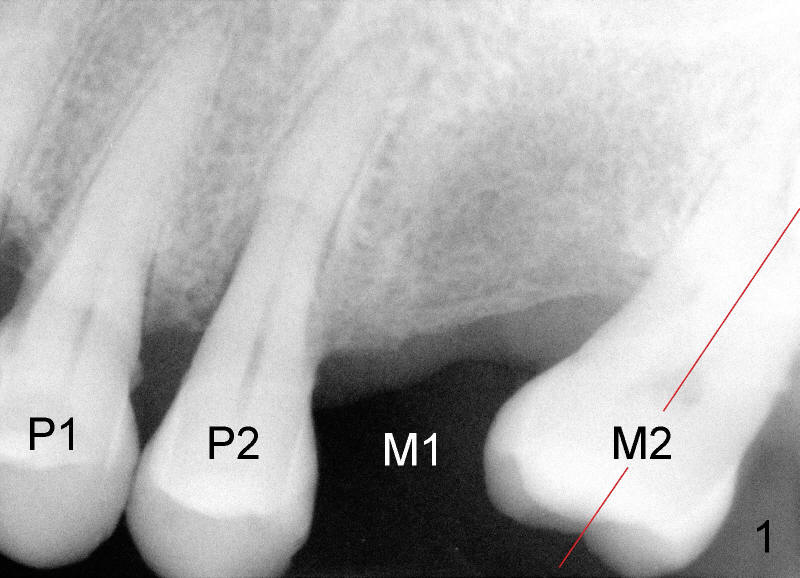
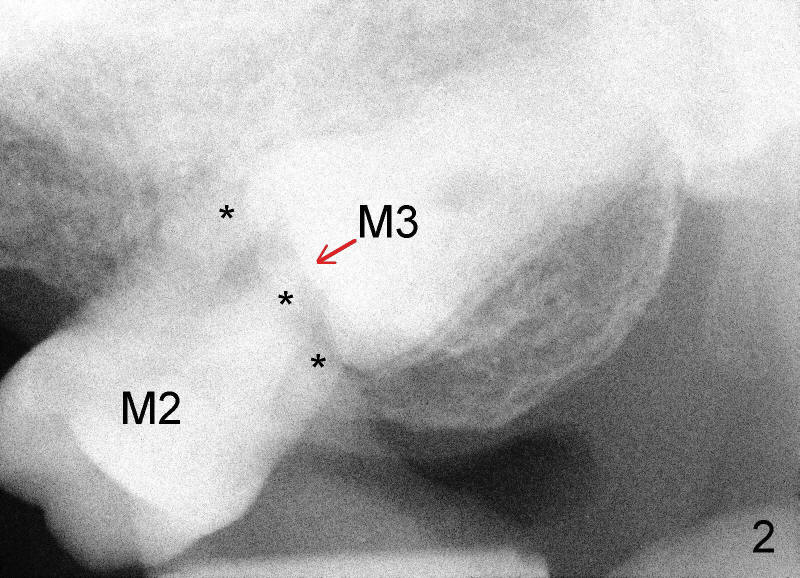
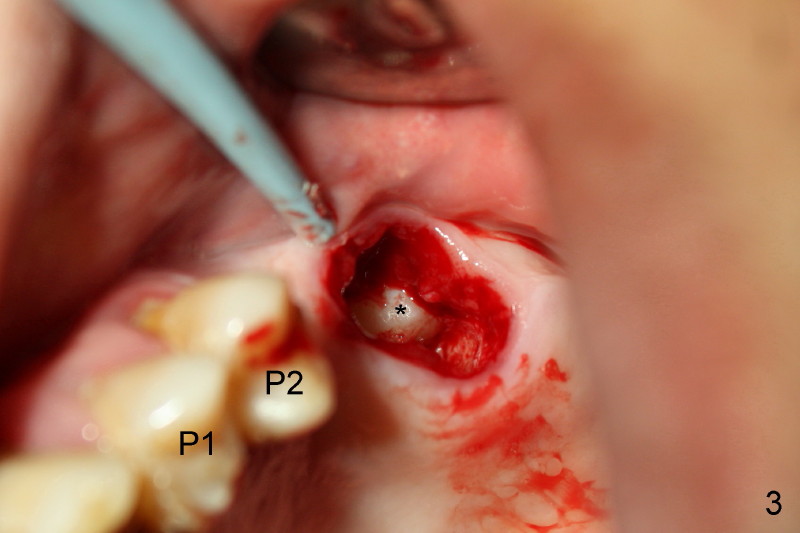
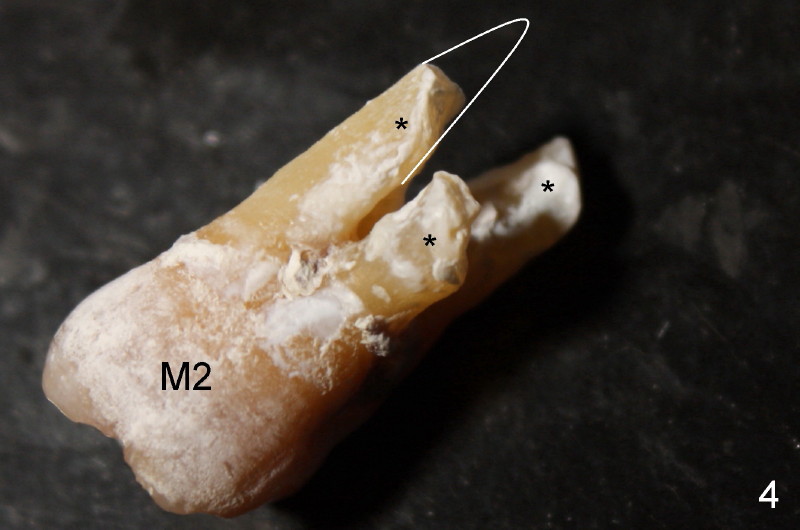
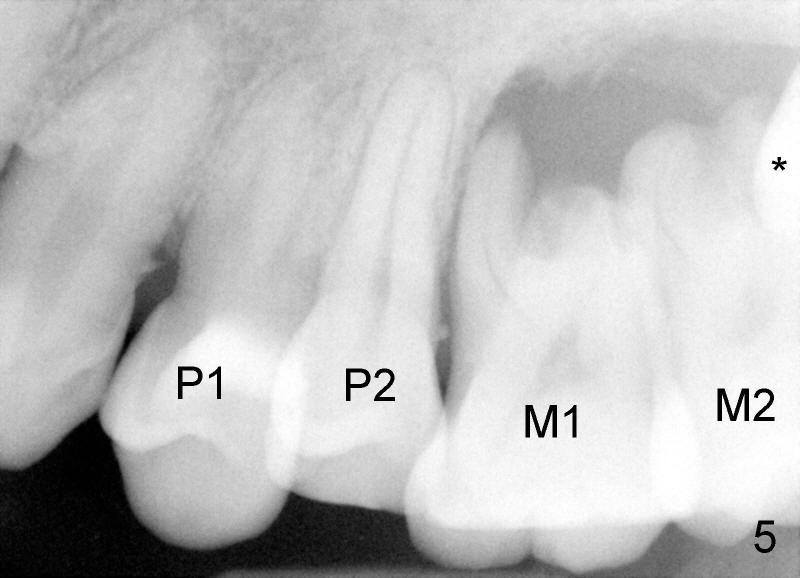
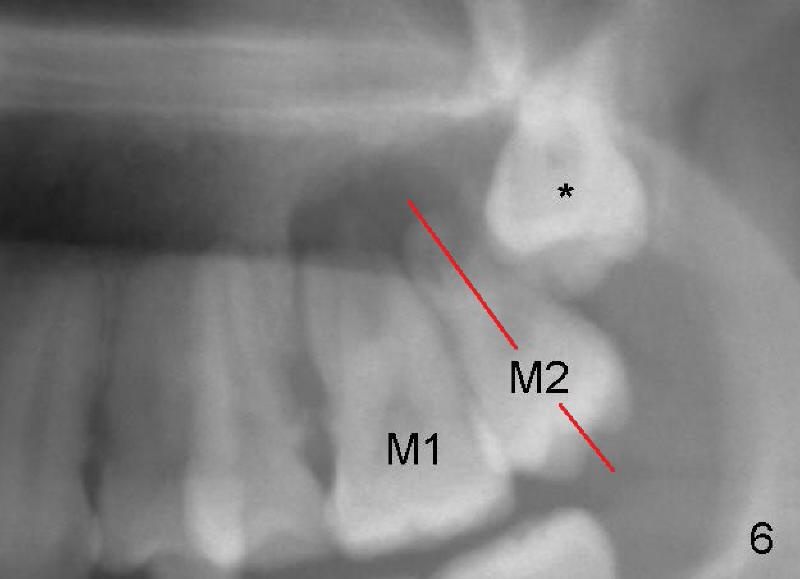
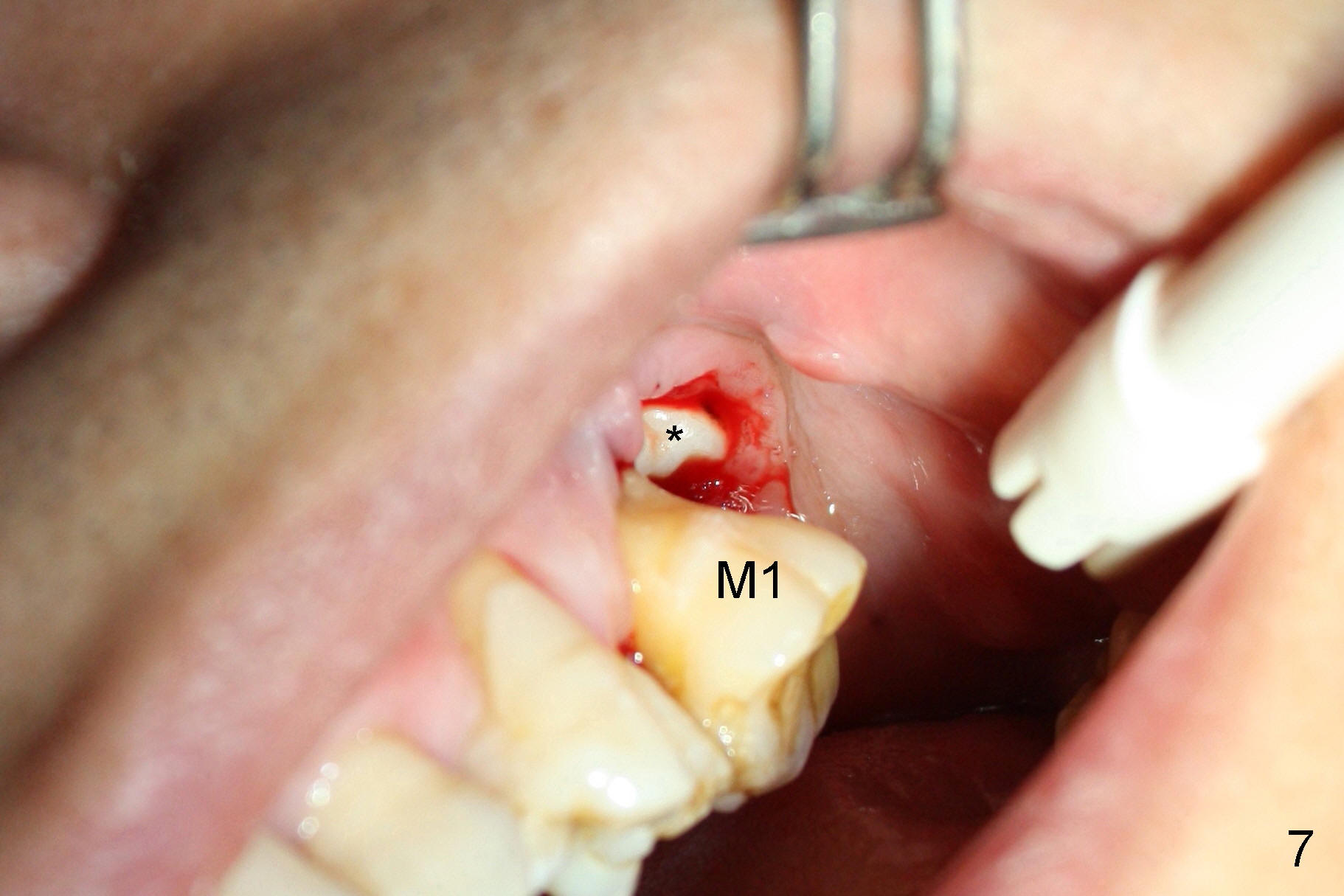
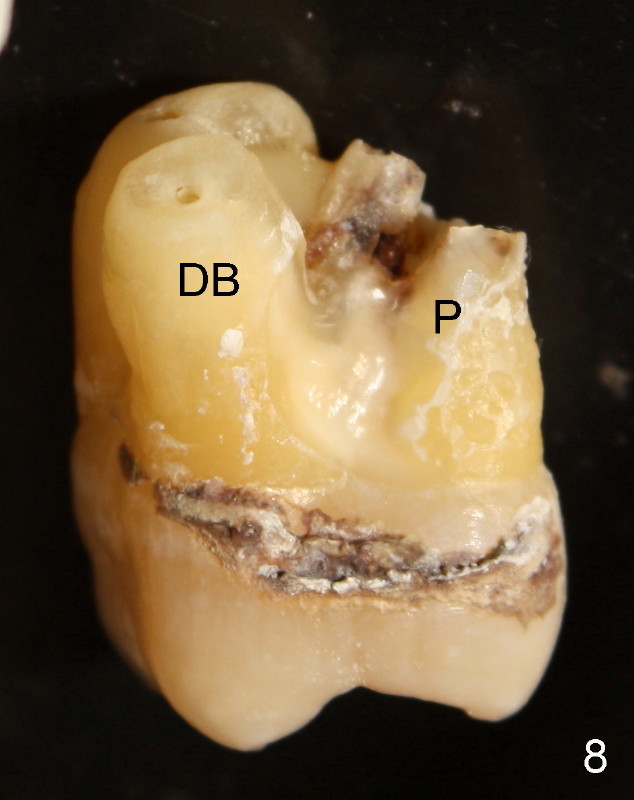
 |
 |
 |
 |
 |
 |
 |
 |
Big Loss (Root Resorption)
Most of Chinese do not have the idea that the wisdom teeth should be extracted as early as possible. In this lecture, we use two cases to show a long effect of keeping the wisdom teeth.
Mr. Li is 50 years old. His complaint is that the upper left back tooth is loose and painful when he chews. He cannot chew even on the right side! Chewing on the right side can touch the loose tooth on the left, causing excruciating pain. Exam shows that the first molar is missing (Fig.1: M1), whereas the painful second molar has shifted and tilted forward (M2, red line indicating its long axis, as compared to the orientation of the neighboring teeth: premolars P1, P2). A second X-ray shows that a wisdom tooth (Fig.2 M3) presses upon (red arrow) the roots of the 2nd molar (*). When the 2nd molar is extracted, the wisdom tooth is visible from the socket (Fig.3 *). In fact, the pain and looseness of the 2nd molar is probably due to root resorption (Fig.4 rough surfaces) of all of its three roots (*). A normal root is rounded and smooth, as indicated by white outline in Fig.4. In summary, Mr. Li loses his 2nd molar without taking out the wisdom tooth early. What a big loss.
Mr. Xu in his late thirties also sustains a loss in a similar fashion. A wisdom tooth (Fig.5,6 *) also presses against the roots of the 2nd molar (M2) and changes the axis of the latter (red line in Fig.6). The proximity of the wisdom tooth (*) to the roots of the 2nd molar is re-confirmed by Fig.7. Root resorption is the most severe in the palatal root (Fig.8 P). There is mild resorption in the other root (distobuccal, DB).
The most surprising is that these two wisdom teeth never cause pain directly. That is why these two patient never seek medical help for wisdom teeth. Twenty to thirty years later, they cause root resorption of the neighboring teeth, which are more important than the wisdom teeth.
Xin Wei, DDS, PhD, MS 1st edition 06/29/2012, last revision 07/15/2012